Friction and Wear Behavior between Crane Wire Rope and Pulley under Different Contact Loads
Abstract
1. Introduction
2. Materials and Methods
2.1. Test Sample
2.2. Test Procedure
2.3. Test Parameters and Methods
3. Results and Discussion
3.1. Sliding Friction Parameters
3.2. Characteristic Parameters of Surface Wear Scar
3.3. Surface Wear Mechanism of Wire Rope
3.4. Bending Fatigue Failure of Worn Wire Rope
4. Conclusions
- (1)
- The COF decreases with the increasing sliding distance, and the variation speed is fast and then slow. The effect of contact load on the COF in the stable stage is small. With the contact load increasing from 600 N to 800 N, the COF fluctuates in the range of approximately 0.52 to 0.59.
- (2)
- The surface temperature rise of the wire rope increases rapidly and then becomes stable gradually during the friction test. The surface temperature of the wire rope rises relatively fast under the condition of large load contact. The increase in contact load causes the friction temperature rise to increase first and then decrease, and the temperature reaches the maximum at the load of 700 N, which is approximately 57 °C.
- (3)
- Rope–pulley sliding contact causes the wear of the wire rope to be discontinuously distributed on multiple strands with irregular contour. Under the same sliding condition, the larger contact load leads to an increase in the wear degree of the wire rope. The wear width increases from approximately 1.94 mm to 2.45 mm with the increasing contact load.
- (4)
- In the process of sliding wear between the wire rope and the pulley groove, the size of wear debris becomes smaller and smaller. The wear surface of the wire rope becomes smoother and the damage characteristics, such as furrows and pits, are no longer obvious with the increasing contact load. The wear mechanism under large contact load is mainly adhesive wear.
- (5)
- Surface wear accelerates the fracture speed of the wire rope and causes the broken wire position to be concentrated under bending fatigue condition. An increase in contact load leads the maximum bending fatigue cycles of the worn wire rope to decrease from approximately 7700 to 4850. The bending fatigue life of the wire rope decreases with an increase in sliding contact load. The fracture failure mechanism of the wire rope is mainly brittle fracture.
Author Contributions
Funding
Data Availability Statement
Conflicts of Interest
References
- Zhang, D.; Yang, X.; Chen, K.; Zhang, Z. Fretting Fatigue Behavior of Steel Wires Contact Interface Under Different Crossing Angles. Wear 2018, 400–401, 52–61. [Google Scholar] [CrossRef]
- Guerra-Fuentes, L.; Torres-López, M.; Hernandez-Rodriguez, M.A.L.; Garcia-Sanchez, E. Failure Analysis of Steel Wire Rope Used in Overhead Crane System. Eng. Fail. Anal. 2020, 118, 104893. [Google Scholar] [CrossRef]
- Pal, U.; Mukhopadhyay, G.; Sharma, A.; Bhattacharya, S. Failure Analysis of Wire Rope of Ladle Crane in Steel Making Shop. Int. J. Fatigue 2018, 116, 149–155. [Google Scholar] [CrossRef]
- Wang, D.; Zhang, D.; Zhang, Z.; Ge, S. Effect of Various Kinematic Parameters of Mine Hoist on Fretting Parameters of Hoisting Rope and a New Fretting Fatigue Test Apparatus of Steel Wires. Eng. Fail. Anal. 2012, 22, 92–112. [Google Scholar] [CrossRef]
- Wang, D.; Zhang, J.; Ge, S.; Zhang, D.; Shi, G. Mechanical Behavior of Hoisting Rope in 2 Km Ultra Deep Coal Mine. Eng. Fail. Anal. 2019, 106, 104185. [Google Scholar] [CrossRef]
- Hakala, T.J.; Laukkanen, A.; Suhonen, T.; Holmberg, K. A Finite-Element Model for a Paste Lubricated Steel Wire vs. Cast Iron Contact. Tribol. Int. 2020, 150, 106362. [Google Scholar] [CrossRef]
- Zhang, J.; Wang, D.; Zhang, D.; Ge, S.; Araújo, J.A. Dynamic Contact and Slip Characteristics of Bent Hoisting Rope in Coal Mine. J. Braz. Soc. Mech. Sci. Eng. 2018, 40, 1–9. [Google Scholar] [CrossRef]
- Singh, R.P.; Mallick, M.; Verma, M.K. Studies on Failure Behaviour of Wire Rope Used in Underground Coal Mines. Eng. Fail. Anal. 2016, 70, 290–304. [Google Scholar] [CrossRef]
- Wang, D.; Zhang, D.; Ge, S. Effect of Displacement Amplitude on Fretting Fatigue Behavior of Hoisting Rope Wires in Low Cycle Fatigue. Tribol. Int. 2012, 52, 178–189. [Google Scholar] [CrossRef]
- Wang, D.; Li, X.; Wang, X.; Zhang, D.; Wang, D.A. Dynamic Wear Evolution and Crack Propagation Behaviors of Steel Wires During Fretting-Fatigue. Tribol. Int. 2016, 101, 348–355. [Google Scholar] [CrossRef]
- Cruzado, A.; Hartelt, M.; Wäsche, R.; Urchegui, M.A.; Gómez, X. Fretting Wear of Thin Steel Wires. Part 1: Influence of Contact Pressure. Wear 2010, 268, 1409–1416. [Google Scholar] [CrossRef]
- Cruzado, A.; Hartelt, M.; Wäsche, R.; Urchegui, M.A.; Gómez, X. Fretting Wear of Thin Steel Wires. Part 2: Influence of Crossing Angle. Wear 2011, 273, 60–69. [Google Scholar] [CrossRef]
- Cruzado, A.; Urchegui, M.A.; Gómez, X. Finite Element Modeling of Fretting Wear Scars in the Thin Steel Wires: Application in Crossed Cylinder Arrangements. Wear 2014, 318, 98–105. [Google Scholar] [CrossRef]
- Xu, C.; Peng, Y.; Zhu, Z.; Lu, H.; Chen, G.; Wang, D.; Peng, X.; Wang, S. Fretting Friction and Wear of Steel Wires in Tension-Torsion and Helical Contact Form. Wear 2019, 432–433, 202946. [Google Scholar] [CrossRef]
- Kumar, K.; Goyal, D.; Banwait, S.S. Effect of Key Parameters on Fretting Behaviour of Wire Rope: A Review. Arch. Comput. Method Eng. 2020, 27, 549–561. [Google Scholar] [CrossRef]
- Wang, D.; Song, D.; Wang, X.; Zhang, D.; Zhang, C.; Wang, D.A.; Araújo, J.A. Tribo-Fatigue Behaviors of Steel Wires Under Coupled Tension-Torsion in Different Environmental Media. Wear 2019, 420–421, 38–53. [Google Scholar] [CrossRef]
- Sun, Z.; Xu, C.; Peng, Y.; Shi, Y.; Zhang, Y. Fretting Tribological Behaviors of Steel Wires Under Lubricating Grease with Compound Additives of Graphene and Graphite. Wear 2020, 454–455, 203333. [Google Scholar] [CrossRef]
- Peng, Y.; Chang, X.; Sun, S.; Zhu, Z.; Gong, X.; Zou, S.; Xu, W.; Mi, Z. The Friction and Wear Properties of Steel Wire Rope Sliding Against Itself Under Impact Load. Wear 2018, 400–401, 194–206. [Google Scholar] [CrossRef]
- Peng, Y.; Wang, G.; Zhu, Z.; Chang, X.; Lu, H.; Tang, W.; Jiang, F.; Chen, G. Effect of Low Temperature on Tribological Characteristics and Wear Mechanism of Wire Rope. Tribol. Int. 2021, 164, 107231. [Google Scholar] [CrossRef]
- Oksanen, V.; Andersson, P.; Valtonen, K.; Holmberg, K.; Kuokkala, V.T. Characterization of the Wear of Nodular Cast Iron Rollers in Contact with Wire Ropes. Wear 2013, 308, 199–205. [Google Scholar] [CrossRef]
- Oksanen, V.; Valtonen, K.; Andersson, P.; Vaajoki, A.; Laukkanen, A.; Holmberg, K.; Kuokkala, V.T. Comparison of Laboratory Rolling–Sliding Wear Tests with in-Service Wear of Nodular Cast Iron Rollers Against Wire Ropes. Wear 2015, 340–341, 73–81. [Google Scholar] [CrossRef]
- Chang, X.; Peng, Y.; Zhu, Z.; Gong, X.; Yu, Z.; Mi, Z.; Xu, C. Experimental Investigation of Mechanical Response and Fracture Failure Behavior of Wire Rope with Different Given Surface Wear. Tribol. Int. 2018, 119, 208–221. [Google Scholar] [CrossRef]
- Jikal, A.; Majid, F.; Chaffoui, H.; Meziane, M.; Elghorba, M. Corrosion Influence on Lifetime Prediction to Determine the Wöhler Curves of Outer Layer Strand of a Steel Wire Rope. Eng. Fail. Anal. 2020, 109, 104253. [Google Scholar] [CrossRef]
- Chen, Y.; Qin, W.; Wang, Q.; Tan, H. Influence of Corrosion Pit on the Tensile Mechanical Properties of a Multi-Layered Wire Rope Strand. Constr. Build. Mater. 2021, 302, 124387. [Google Scholar] [CrossRef]
- Wahid, A.; Mouhib, N.; Ouardi, A.; Sabah, F.; Chakir, H.; ELghorba, M. Experimental Prediction of Wire Rope Damage by Energy Method. Eng. Struct. 2019, 201, 109794. [Google Scholar] [CrossRef]
- Battini, D.; Solazzi, L.; Lezzi, A.M.; Clerici, F.; Donzella, G. Prediction of Steel Wire Rope Fatigue Life Based on Thermal Measurements. Int. J. Mech. Sci. 2020, 182, 105761. [Google Scholar] [CrossRef]
- Zhang, Y.; Zhang, Q.; Peng, Y.; Chang, X.; Chen, G. Tribological behavior of octadecylamine functionalized graphene oxide modified oil for wire rope in mine hoist. Wear 2022, 494, 204273. [Google Scholar] [CrossRef]
- Zhang, Y.; Zhang, Q.; Peng, Y.; Wang, C.; Chang, X.; Chen, G. Preparation and Tribological Properties of Lanthanum Stearate Modified Lubricating Oil for Wire Rope in a Mine Hoist. Materials 2021, 14, 5821. [Google Scholar] [CrossRef]
- Chang, X.; Peng, Y.; Cheng, D.; Zhu, Z.; Wang, D.; Lu, H.; Tang, W.; Chen, G. Influence of Different Corrosive Environments on Friction and Wear Characteristics of Lubricated Wire Ropes in a Multi-Layer Winding System. Eng. Fail. Anal. 2022, 131, 105901. [Google Scholar] [CrossRef]
- McColl, I.R.; Waterhouse, R.B.; Harris, S.J.; Tsujikawa, M. Lubricated fretting wear of a high-strength eutectoid steel rope wire. Wear 1995, 185, 203–212. [Google Scholar] [CrossRef]
- Périer, V.; Dieng, L.; Gaillet, L.; Fouvry, S. Influence of an aqueous environment on the fretting behaviour of steel wires used in civil engineering cables. Wear 2011, 271, 1585–1593. [Google Scholar] [CrossRef]
- Molnár, V.; Fedorko, G.; Krešák, J.; Peterka, P.; Fabianová, J. The influence of corrosion on the life of steel ropes and prediction of their decommissioning. Eng. Fail. Anal. 2017, 74, 119–132. [Google Scholar] [CrossRef]
- Wu, S.; Chen, H.; Ramandi, H.L.; Hagan, P.C.; Crosky, A.; Saydam, S. Effects of environmental factors on stress corrosion cracking of cold-drawn high-carbon steel wires. Corros. Sci. 2018, 132, 234–243. [Google Scholar] [CrossRef]
- Krbata, M.; Eckert, M.; Majerik, J.; Barenyi, I. Wear Behavior of High Strength Tool Steel 90MnCrV8 in Contact with Si3N4. Metals 2020, 10, 756. [Google Scholar] [CrossRef]
- Krbata, M.; Eckert, M.; Bartosova, L.; Barenyi, I.; Majerik, J.; Mikuš, P.; Rendkova, P. Dry Sliding Friction of Tool Steels and Their Comparison of Wear in Contact with ZrO2 and X46Cr13. Materials 2020, 13, 2359. [Google Scholar] [CrossRef]
- Chang, X.; Peng, Y.; Zhu, Z.; Gong, X.; Yu, Z.; Mi, Z.; Xu, C. Effects of Strand Lay Direction and Crossing Angle on Tribological Behavior of Winding Hoist Rope. Materials 2017, 10, 630. [Google Scholar] [CrossRef]
- Chang, X.; Peng, Y.; Zhu, Z.; Zou, S.; Gong, X.; Xu, C. Evolution Properties of Tribological Parameters for Steel Wire Rope under Sliding Contact Conditions. Metals 2018, 8, 743. [Google Scholar] [CrossRef]
- Studeny, Z.; Krbata, M.; Dobrocky, D.; Eckert, M.; Ciger, R.; Kohutiar, M.; Mikus, P. Analysis of Tribological Properties of Powdered Tool Steels M390 and M398 in Contact with Al2O3. Materials 2022, 15, 7562. [Google Scholar] [CrossRef]
- Chang, X.; Peng, Y.; Cheng, D.; Zhu, Z.; Wang, D. The Correlation Between Wear Evolution and Mechanical Property Degradation of Wire Rope in a Multilayer Winding System. J. Tribol. 2022, 144, 091702. [Google Scholar] [CrossRef]
- Han, X.; Zhang, J.; Wang, H.; Cui, W.; Wang, D. Tribo-Fatigue Characteristics of Braided Wire Rope for Traction Under Low Cycle Bending Fatigue. Proc. Inst. Mech. Eng. Part C J. Mech. Eng. Sci. 2021, 235, 6529–6540. [Google Scholar] [CrossRef]
- Hanke, S.; Dos Santos, J.F. Comparative Study of Severe Plastic Deformation at Elevated Temperatures of Two Aluminium Alloys During Friction Surfacing. J. Mater. Process. Technol. 2017, 247, 257–267. [Google Scholar] [CrossRef]
- Zhang, D.; Feng, C.; Chen, K.; Wang, D.; Ni, X. Effect of Broken Wire on Bending Fatigue Characteristics of Wire Ropes. Int. J. Fatigue 2017, 103, 456–465. [Google Scholar] [CrossRef]
- Zhang, D.; Chen, K.; Jia, X.; Wang, D.; Wang, S.; Luo, Y.; Ge, S. Bending Fatigue Behaviour of Bearing Ropes Working Around Pulleys of Different Materials. Eng. Fail. Anal. 2013, 33, 37–47. [Google Scholar] [CrossRef]
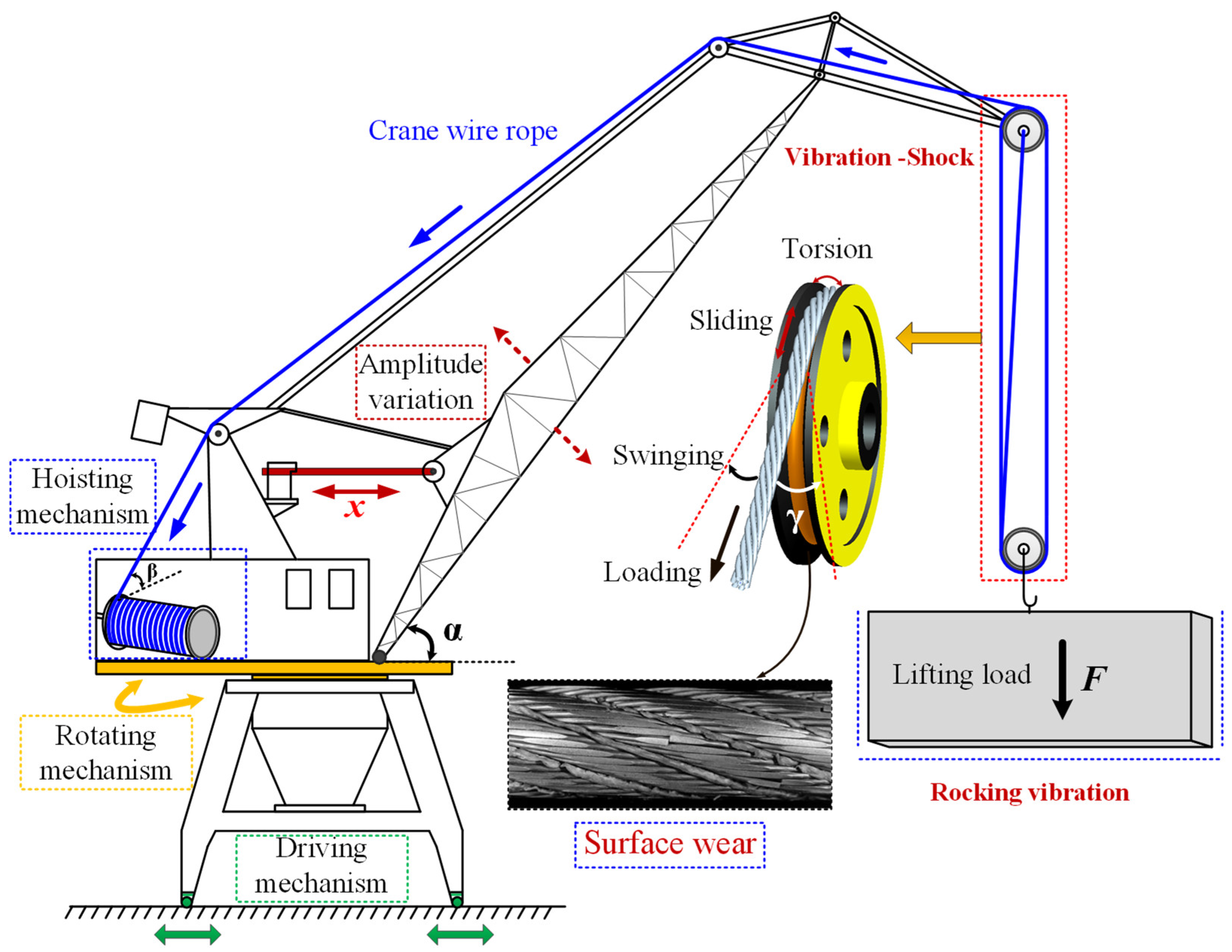

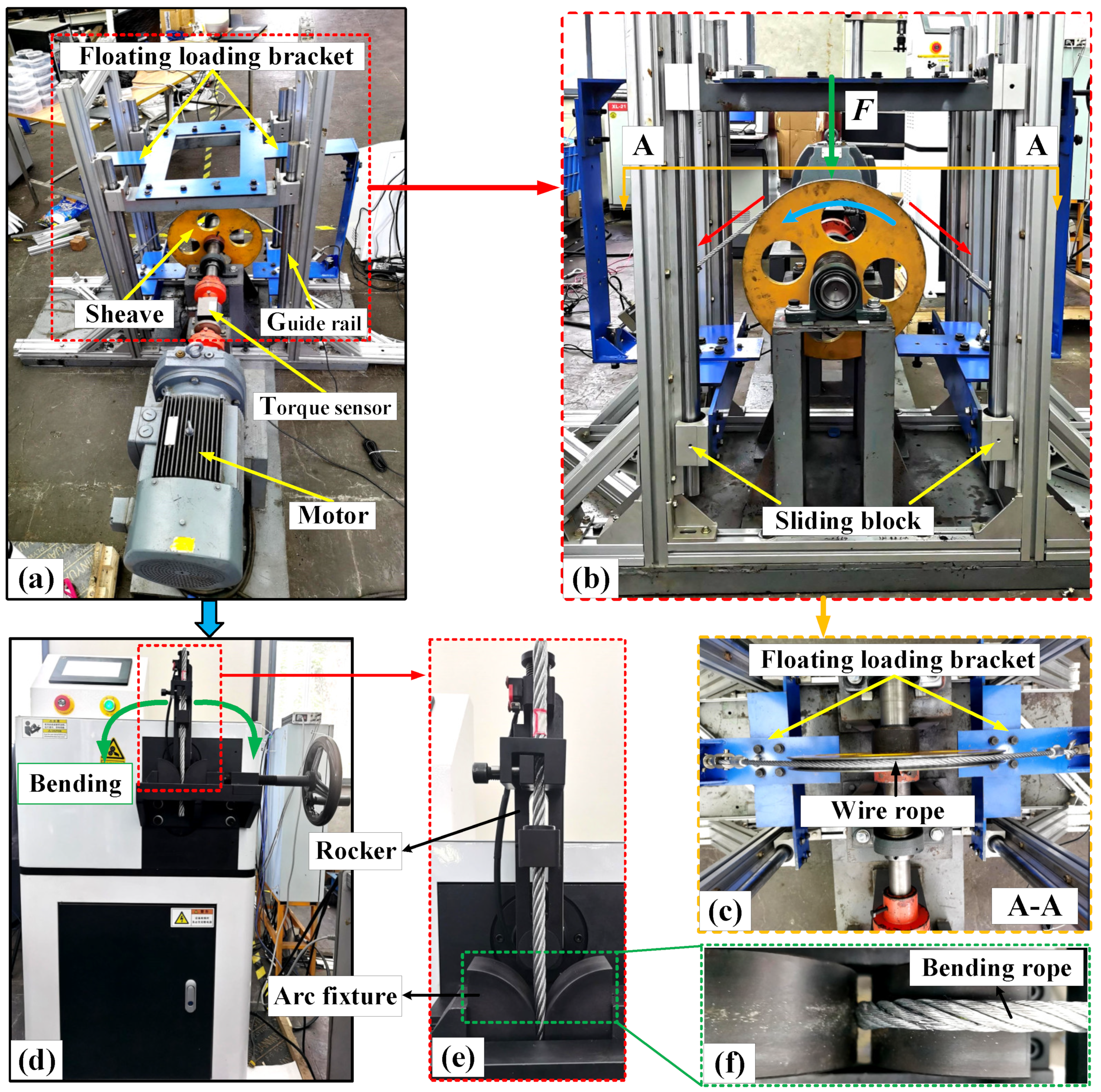




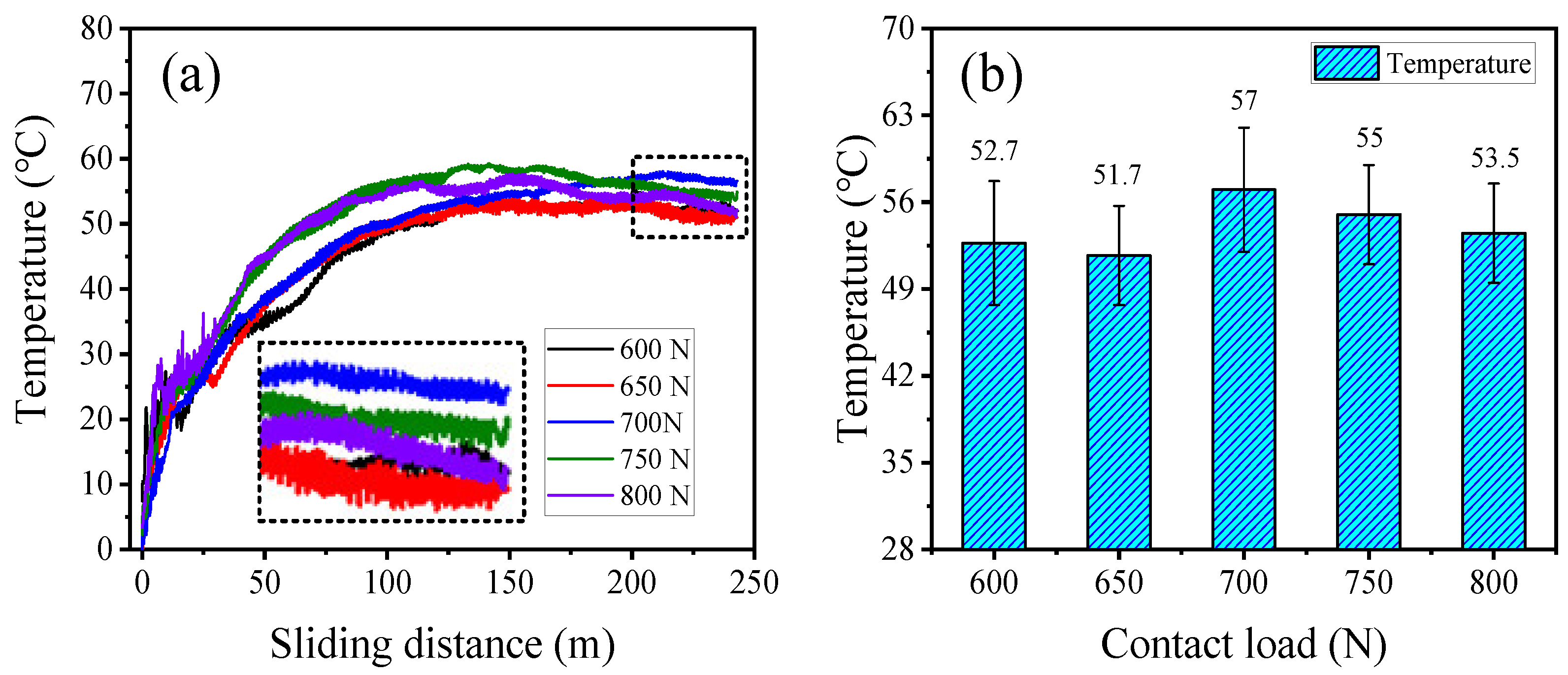


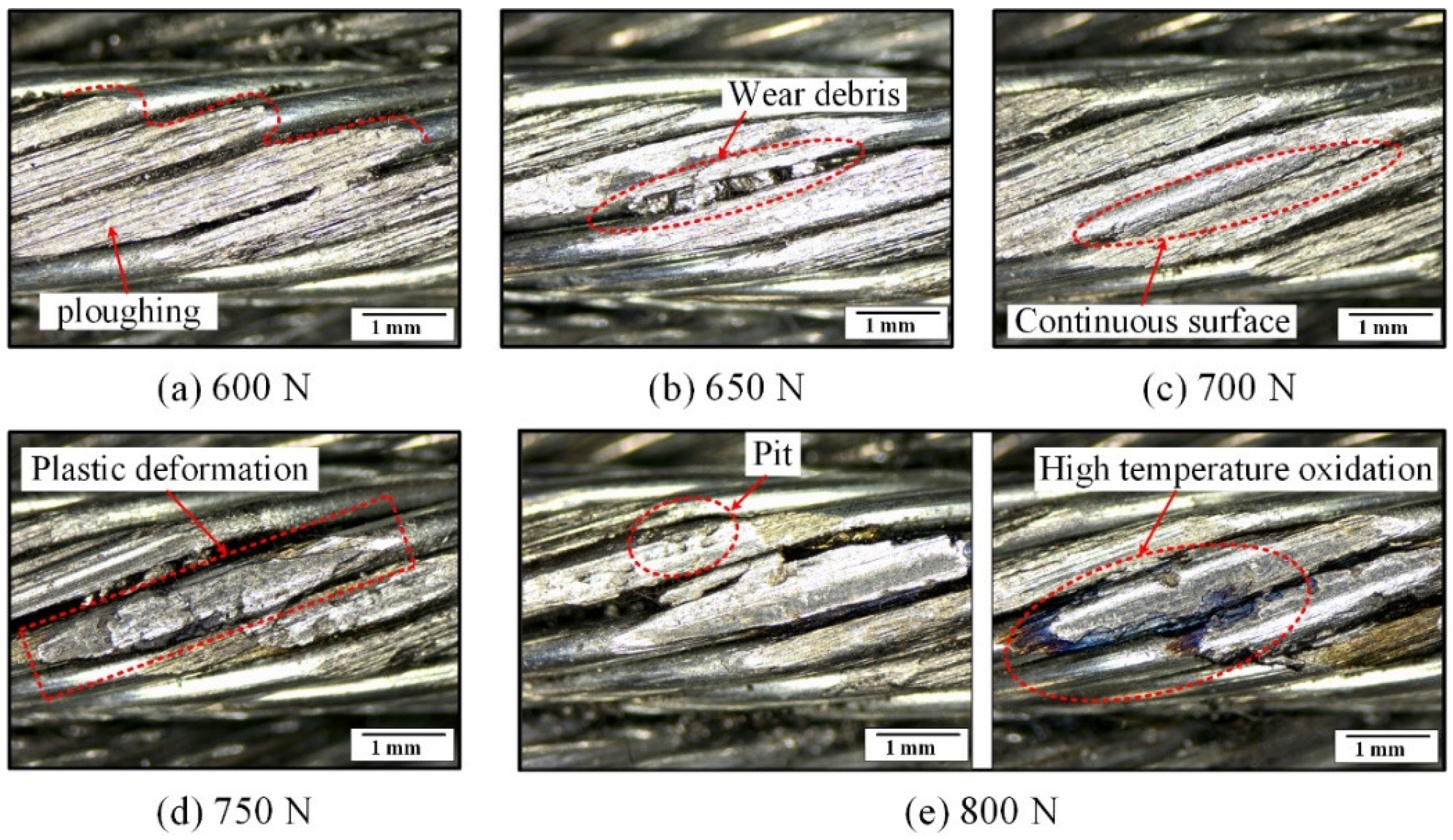
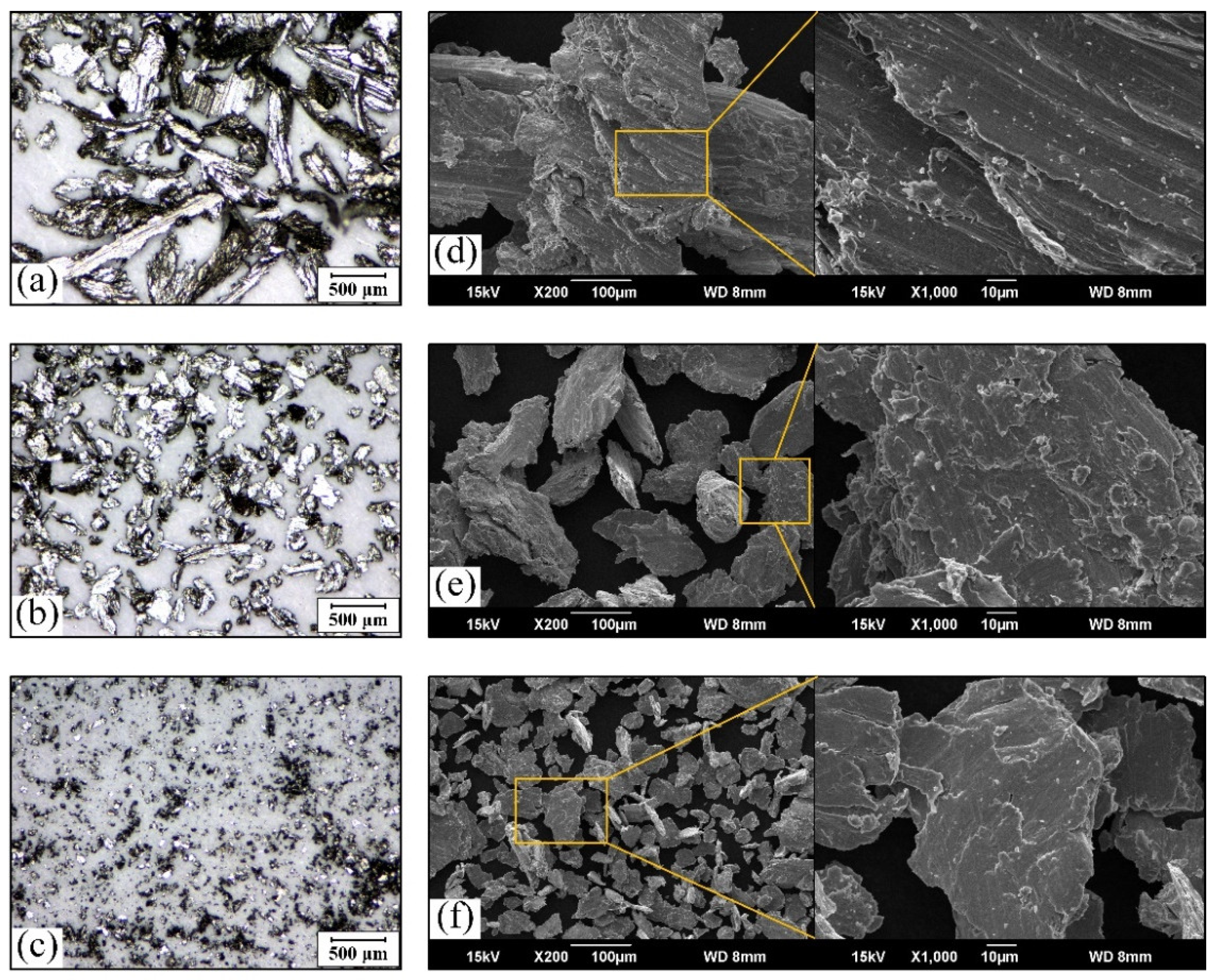
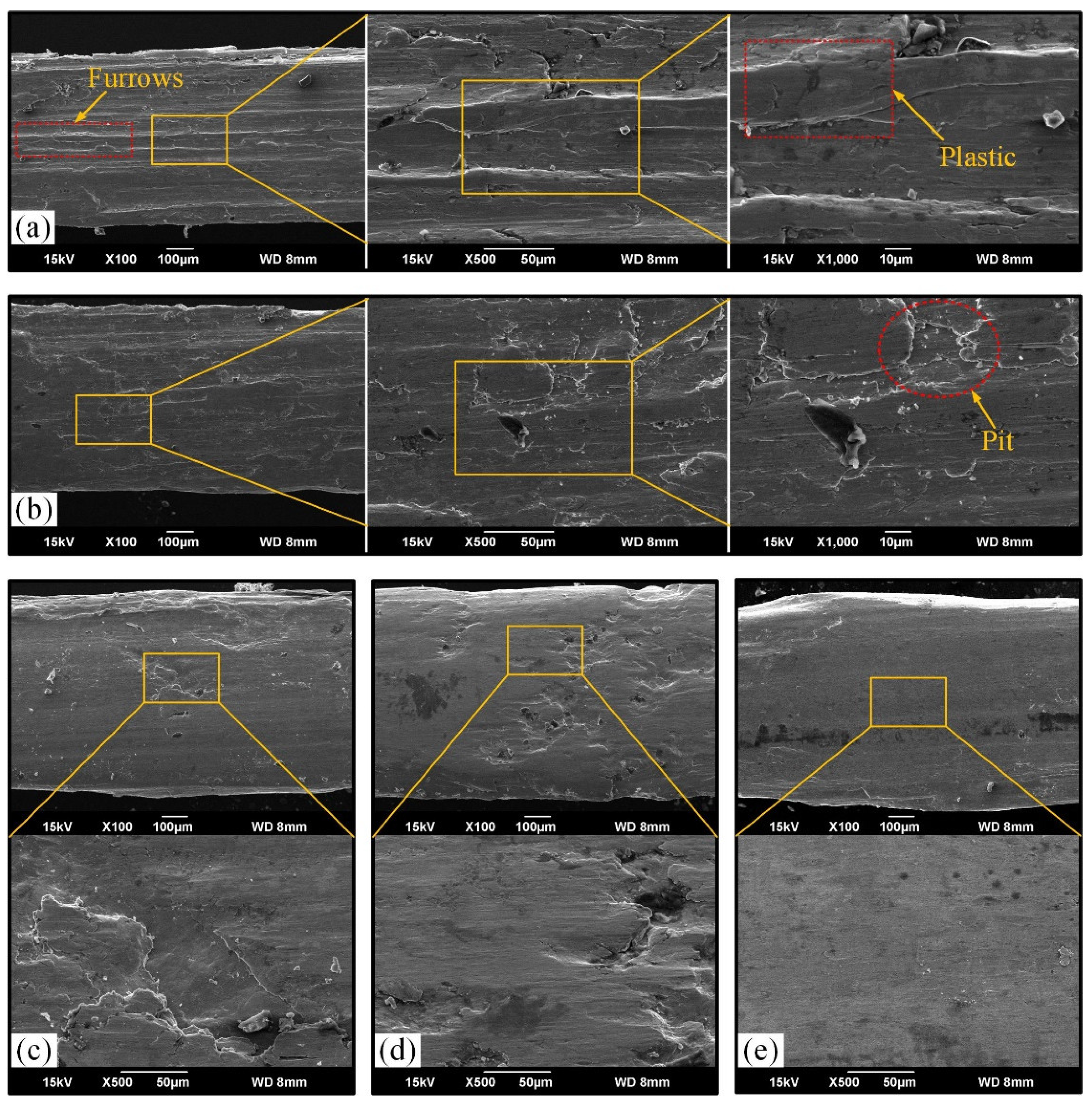


| Parameter | Value |
|---|---|
| Length of the rope sample (mm) | 600 |
| Diameter of the rope (mm) | 9.3 |
| Radius of the steel wires (mm) | 0.3 |
| Strand lay length (mm) | 70 |
| Strand lay angle (°) | 15.5 |
| Strand lay direction | Right |
| Nominal tensile strength (Mpa) | 1570 |
| Breaking force (N) | 52,500 |
| Sliding Friction and Wear Test | Bending Fatigue Test | ||
|---|---|---|---|
| Parameters | Values | Parameters | Values |
| Contact load (N) | 600, 650, 700, 750, 800 | Sample length (mm) | 350 |
| Sliding distance (m) | 240 | Frequency (Hz) | 1 |
| Sliding velocity (m/s) | 0.8 | Number of broken wires | 12 |
| Contact angle (°) | 45 | Bending radius (mm) | 100 |
| Contact arc length (mm) | 157 | ||
| Ambient temperature (°C) | 25 ± 5 | ||
| Relative humidity (%) | 50 ± 10 | ||
| Atmosphere | Laboratory air | ||
Publisher’s Note: MDPI stays neutral with regard to jurisdictional claims in published maps and institutional affiliations. |
© 2022 by the authors. Licensee MDPI, Basel, Switzerland. This article is an open access article distributed under the terms and conditions of the Creative Commons Attribution (CC BY) license (https://creativecommons.org/licenses/by/4.0/).
Share and Cite
Chang, X.; Chen, X.; Dong, Y.; Lu, H.; Tang, W.; Zhang, Q.; Huang, K. Friction and Wear Behavior between Crane Wire Rope and Pulley under Different Contact Loads. Lubricants 2022, 10, 337. https://doi.org/10.3390/lubricants10120337
Chang X, Chen X, Dong Y, Lu H, Tang W, Zhang Q, Huang K. Friction and Wear Behavior between Crane Wire Rope and Pulley under Different Contact Loads. Lubricants. 2022; 10(12):337. https://doi.org/10.3390/lubricants10120337
Chicago/Turabian StyleChang, Xiangdong, Xiao Chen, Yaoyuan Dong, Hao Lu, Wei Tang, Qing Zhang, and Kun Huang. 2022. "Friction and Wear Behavior between Crane Wire Rope and Pulley under Different Contact Loads" Lubricants 10, no. 12: 337. https://doi.org/10.3390/lubricants10120337
APA StyleChang, X., Chen, X., Dong, Y., Lu, H., Tang, W., Zhang, Q., & Huang, K. (2022). Friction and Wear Behavior between Crane Wire Rope and Pulley under Different Contact Loads. Lubricants, 10(12), 337. https://doi.org/10.3390/lubricants10120337





